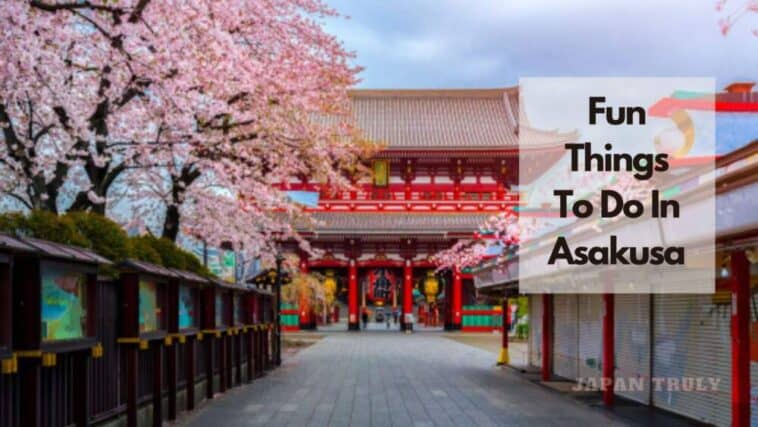Here are some fun things to do in Asakusa.
Dive into the beating heart of Tokyo in Asakusa! From ancient temples bathed in incense to buzzing markets overflowing with treasures, this enchanting district promises adventures around every corner.
So, prepare your camera, sharpen your taste buds, and let’s explore the vibrant kaleidoscope of experiences Asakusa holds!
Page Contents
Things To Do In Asakusa
Sensoji Temple
Founded in 645 AD, Sensoji is Tokyo’s oldest temple, steeped in fascinating lore. Legend has it that two brothers fishing in the Sumida River snagged a statue of Kannon, the Buddhist goddess of mercy.
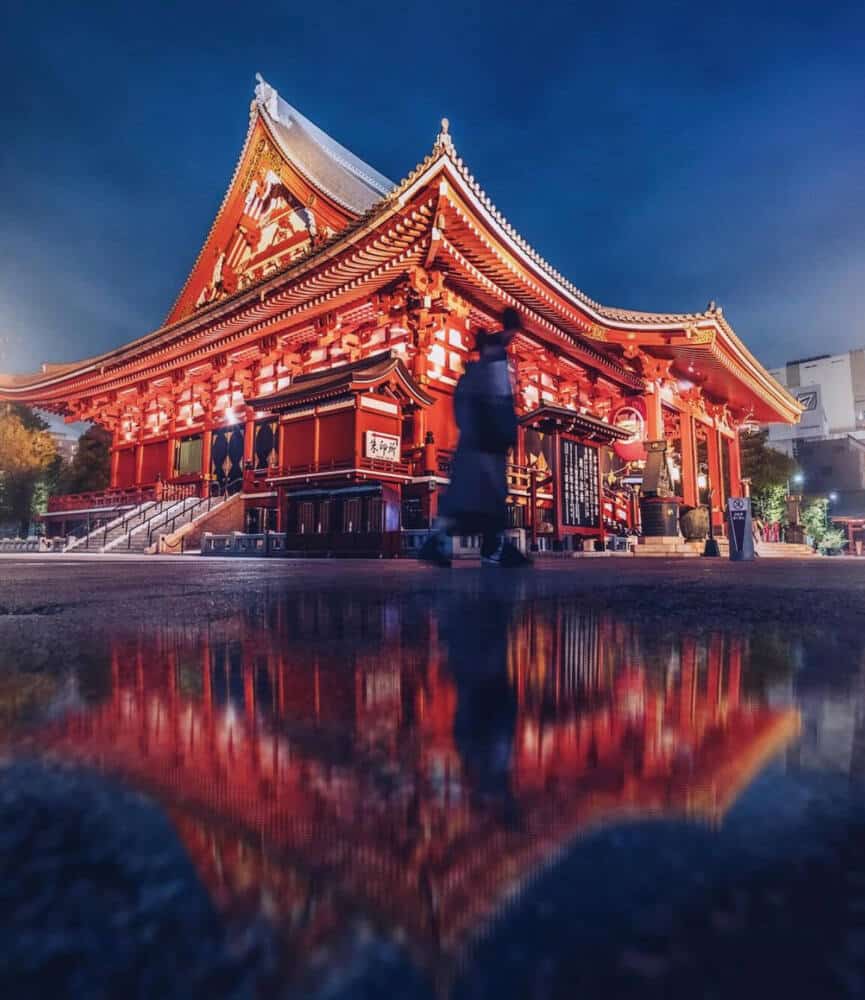

Though they tried to return it, it mysteriously reappeared, leading to the construction of the temple on this very spot.
Architectural Splendor: The temple grounds unfold like a captivating story. As you approach, you’ll be greeted by the iconic Kaminarimon Gate (Thunder Gate), its towering red structure adorned with a giant lantern.
Passing through, you’ll enter the vibrant Nakamise Market, a bustling avenue lined with over 200 shops selling traditional crafts, souvenirs, and delicious snacks.
Beyond the market lies the main hall, where a golden statue of Kannon resides (though hidden from public view). Visitors light incense, offer prayers, and bathe in the serene atmosphere.
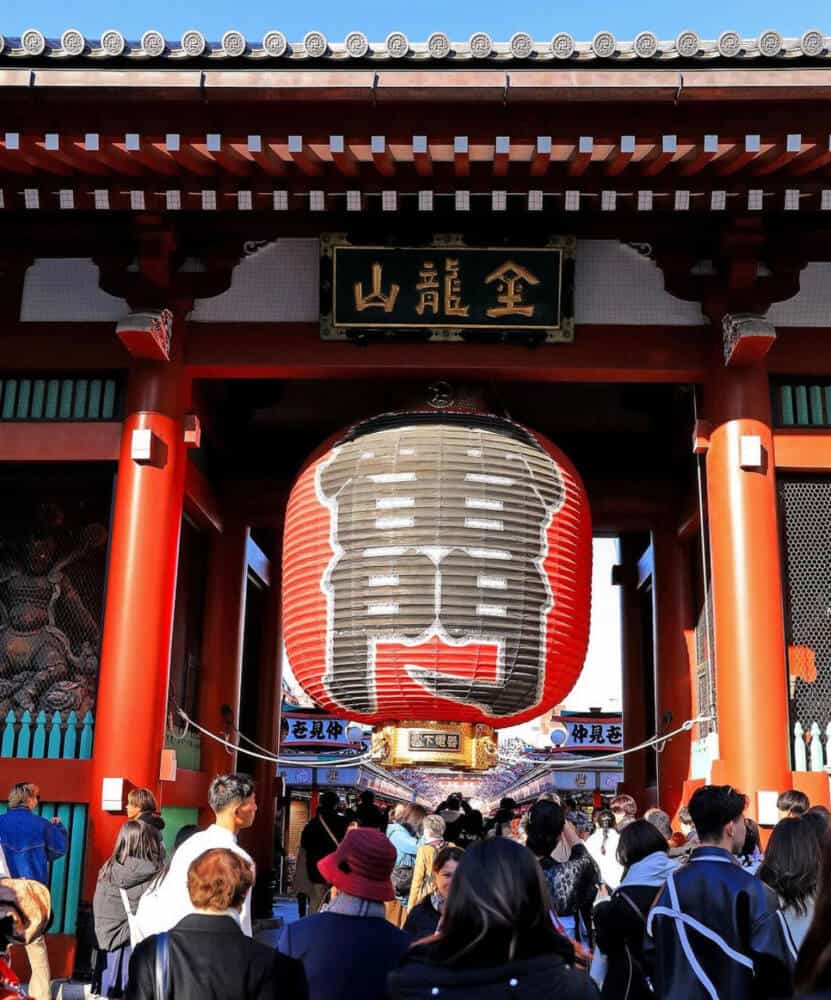
Unveiling its Treasures:
- Five-Storied Pagoda: A striking five-storied pagoda graces the temple grounds, its graceful silhouette reaching towards the sky. Each level houses Buddhist relics and offers symbolic significance
- Hōzōmon Gate: Another architectural marvel is the Hōzōmon Gate, a two-story structure housing sacred sutras and guarded by imposing Nio guardians.
- Serene Gardens: Amidst the bustle, tranquil gardens offer a haven for reflection. Stroll through the lush greenery and koi ponds, finding pockets of peace within the temple complex.
Beyond the Sights:
- Experience a Ritual: Witness the ritual of Goma no Hi, where priests burn sacred cedar branches to cleanse away impurities and offer prayers for good fortune.
- Festivals and Events: Throughout the year, Sensoji comes alive with vibrant festivals, from the Sanja Matsuri in May with its extravagant parade to the Hozuki Misoji ceremony in February, where monks throw bean sprouts from the Hōzōmon Gate for good luck.
Sensoji Temple is more than just a tourist attraction; it’s a window into Japan’s rich history, culture, and spiritual beliefs. As you explore its grounds, let your imagination wander through time, soaking in the unique atmosphere and connecting with the essence of Tokyo.
- Related: Best Things To Do With Kids In Tokyo
Nakamise Market
This vibrant artery pulsating with history and culinary delights deserves a closer look. Imagine stepping back in time to the 17th century as you wander through this 250-meter stretch lined with over 200 shops, each a story waiting to unfold.
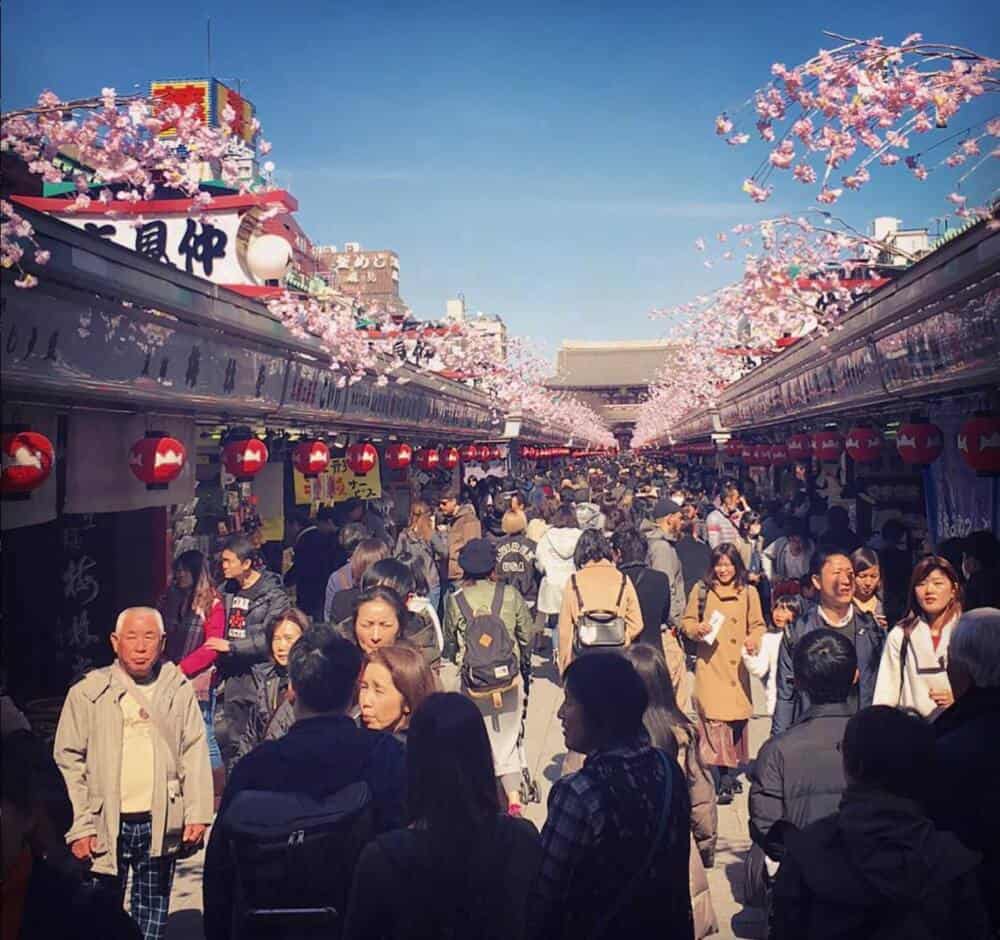
Nakamise serves as the main approach to Sensoji Temple, its entrance marked by the majestic Kaminarimon Gate. As you pass beneath it, the market unfolds before you, beckoning with a kaleidoscope of colors and tempting aromas.
The air buzzes with a unique blend of chatter, clanging gongs, and the sizzle of street food, transporting you to the heart of authentic Tokyo.
Each shop in Nakamise is a treasure trove of Japanese craftsmanship. Kimono shops display vibrant silken fabrics, while lacquerware stores gleam with polished wood products.
Traditional toys like kokeshi dolls and intricate paper lanterns add pops of color. You can even find stores specializing in calligraphy supplies, samurai swords, and delicate teacups.
But Nakamise isn’t just about souvenirs; it’s a haven for foodies too. Indulge in melt-in-your-mouth ningyo-yaki, adorable baked cakes filled with sweet bean paste. Bite into fluffy taiyaki, fish-shaped pastries stuffed with red bean paste.
Don’t miss out on dango, skewered dumplings drizzled with sweet soy sauce. And for a refreshing treat, grab some kakigori, shaved ice topped with syrups and condensed milk.
While shopping is a major draw, Nakamise offers more than just retail therapy. Look for skilled artisans demonstrating their craft, from woodblock printing to candy making.
Immerse yourself in the vibrant atmosphere, take photos with friendly shopkeepers, and soak in the cultural tapestry woven by generations of vendors.
Tokyo Skytree
owering over Tokyo’s skyline, the Tokyo Skytree is a marvel of modern engineering and a must-see for any visitor to the city. Let’s delve into its impressive features:
Reaching for the Heavens:
- Sky-High Stature: At 634 meters (2,080 feet), Tokyo Skytree holds the title of the tallest structure in Japan and the second-tallest in the world, surpassed only by the Burj Khalifa in Dubai. Its imposing height offers unmatched panoramic views of the city, stretching from bustling streets to distant mountains.
- Architectural Prowess: The tower’s design resembles a traditional pagoda, a nod to Japan’s rich architectural heritage. It’s composed of three interwoven metal tubes supporting six observation decks, ensuring stability even during earthquakes and typhoons.
- Illuminating the Night: Tokyo Skytree transforms into a dazzling beacon after sunset. Its LED lighting system displays various colors and patterns, creating mesmerizing shows that change with the seasons and special occasions.
A Bird’s-Eye View of Tokyo:
- Breathtaking Panoramas: The observation decks offer unparalleled views of Tokyo, from the iconic landmarks like the Imperial Palace and Tokyo Tower to the sprawling cityscape extending to the horizon. On a clear day, you might even catch a glimpse of Mount Fuji!
- Interactive Exhibits: Each observation deck features interactive exhibits that delve into the history and construction of the tower, the science behind its design, and fascinating facts about Tokyo.
- Dining with a View: Indulge in a fine dining experience at one of the restaurants within the tower. Savor delectable meals while soaking in the breathtaking urban panorama through floor-to-ceiling windows.
Tokyo Skytree is more than just a towering structure; it’s a symbol of Tokyo’s modern spirit and a gateway to unforgettable experiences.
Take a walk along the Sumida River
Imagine yourself starting your walk near Asakusa, where the iconic Sensoji Temple casts its watchful gaze over the river. You can cross the vibrant Nakamise Market, bustling with colorful stalls, before dipping your toes onto the path alongside the water.
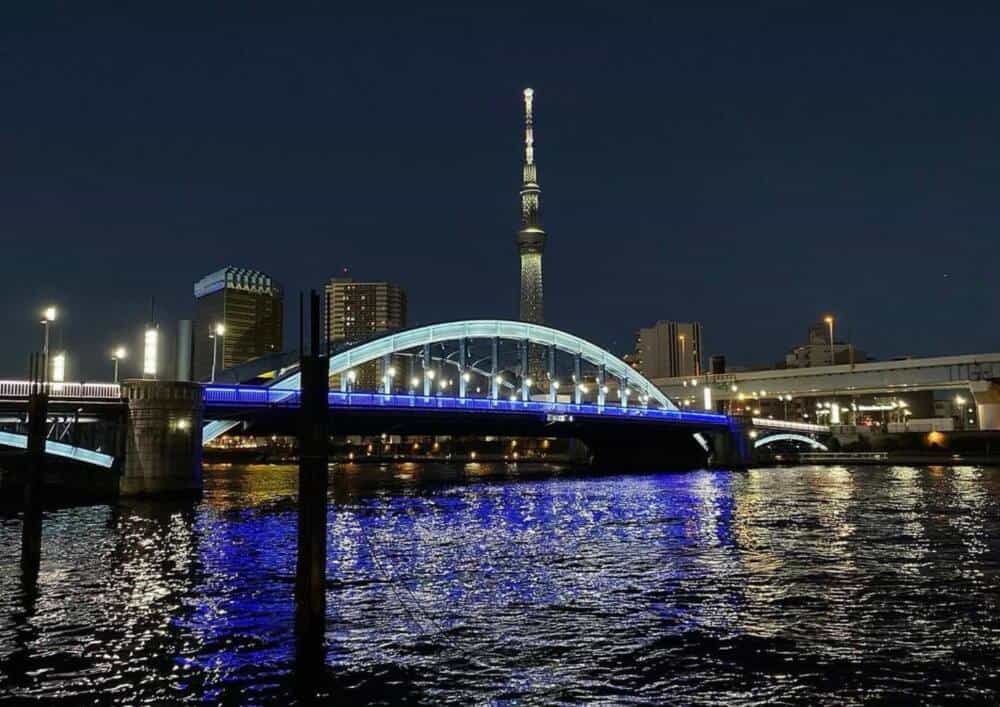
The river gently snakes its way through the city, offering picturesque views at every turn. Traditional wooden boats cruise by, their gentle oars cutting through the water’s surface.
Lush parks like Sumida Park provide pockets of greenery, inviting you to pause and soak in the serenity.
As you walk, you’ll encounter a series of bridges, each with its own character. The Ryogoku Kokugikan, adorned with sumo wrestler statues, hints at the city’s sporting spirit. The Azumabashi Bridge, with its modern steel arches, reflects Tokyo’s futuristic edge.
Keep an eye out for glimpses of traditional life along the riverbanks. Families picnicking under cherry blossoms in spring, fishermen casting their lines, or even the rhythmic beats of taiko drums echoing from nearby practice studios—these moments offer a glimpse into the soul of Tokyo.
No walk along the Sumida River is complete without indulging in some local treats. Stop at a yakitori stall for skewered grilled chicken, grab a taiyaki (fish-shaped pastry) filled with sweet bean paste, or savor a refreshing cold ramen on a hot day.
Experience a traditional Japanese Tea Ceremony
Stepping into a traditional Japanese tea ceremony is like stepping into another world. Time slows, the air whispers with tranquility, and every movement carries a quiet grace.
Imagine a tranquil garden, sunlight filtering through bamboo leaves, and the gentle trickle of a stone fountain. A rustic teahouse, crafted from wood and tatami mats, awaits.
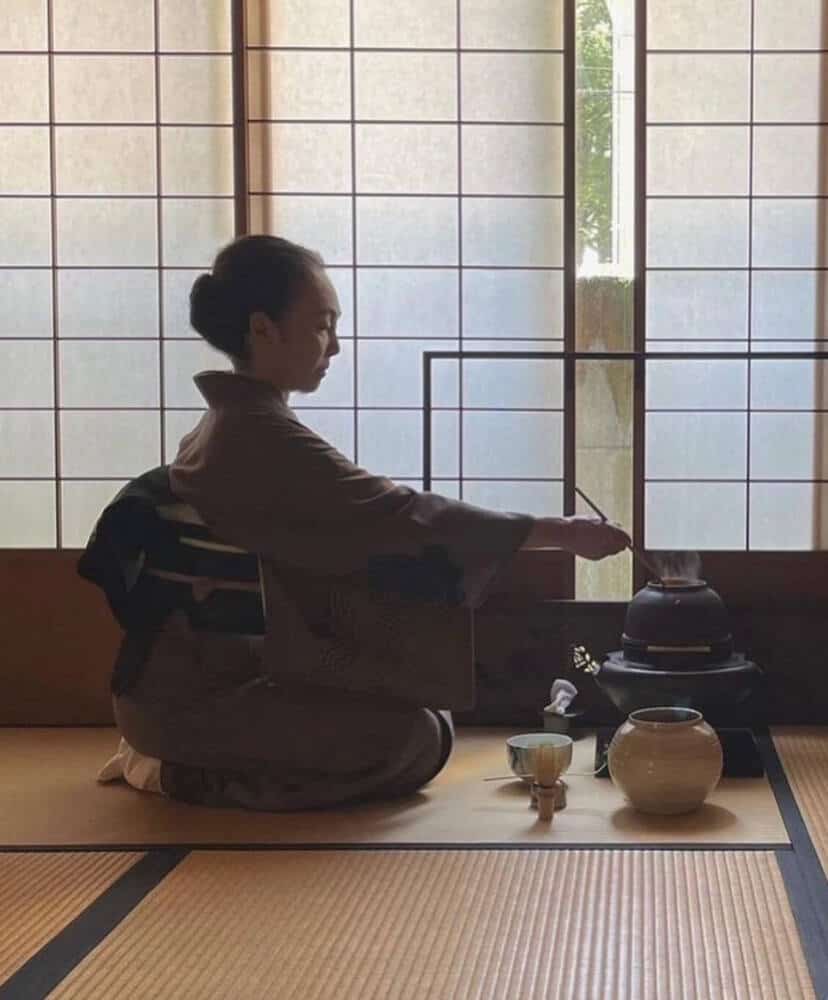
The tea master, dressed in a simple kimono, welcomes you with a slight bow. They perform each step with deliberate precision, from preparing the matcha (green tea powder) to whisking it with hot water in a rhythmic dance.
The scent of matcha fills the air, earthy and calming. The delicate clinking of porcelain cups against bamboo spoons creates a soft melody. The warm green tea, sipped slowly, offers a burst of subtle flavor.
The ceremony is more than just drinking tea. It’s a meditation in mindfulness, a shared experience of appreciating beauty in simplicity and finding peace in the present moment.
Leaving the teahouse, you carry a sense of serenity and a renewed appreciation for the present. The ceremony leaves a lasting impression, a reminder to slow down, savor the simple things, and find beauty in every moment.
Rent a Kimono and Walk around Asakusa
Wearing a kimono is a great way to experience Japanese culture firsthand. There are many rental shops in Asakusa where you can choose from a variety of kimonos and get help putting them on.
Catch a Performance at the Kabuki-za theater
Imagine stepping into a world of vibrant costumes, dramatic poses, and ancient stories whispered through centuries. That’s the magic of experiencing Kabuki, a traditional Japanese form of theater, and there’s no better place to do it than the famed Kabuki-za theater in Asakusa.
- A Grand Entrance: The Kabuki-za itself is a spectacle. Its traditional wooden facade adorned with gold accents hints at the richness within. Stepping through the ornate doors, you’re transported to a bygone era of elegance and artistry.
- A Feast for the Senses: The stage unfurls like a painted scroll, each scene meticulously crafted with elaborate sets and props. Actors, adorned in layers of silk and adorned with dramatic makeup, embody their roles with a mesmerizing blend of exaggerated gestures and powerful voices.
- Beyond Words: Language takes a backseat to expression. The rhythmic chanting of the narrators, the haunting melodies of shamisen lutes, and the thunderous pounding of wooden clappers weave a spellbinding tapestry of sound and emotion.
- Stories that Captivate: Kabuki plays draw on myths, legends, and historical dramas, often exploring themes of love, loyalty, and revenge. Whether it’s the tragic beauty of “The Love Suicides at Sonezaki” or the thrilling action of “Chushingura,” each performance leaves a lasting impression.
- A Glimpse into Culture: Witnessing Kabuki is more than just entertainment; it’s a window into Japanese culture and tradition. It’s a chance to appreciate the dedication of generations of performers who have kept this art form alive for centuries.
Asakusa Shrine
Asakusa Shrine honors the three men who founded Sensoji: two brothers who fished out a Kannon statue, and their master carpenter. Their legend and spirit permeate the air.
Locals, not just tourists, pay respects, lighting lanterns and whispering prayers at the main hall. Look for the carved foxes, messengers of the kami (deities), guarding the shrine’s secrets.
On festival days, Sanja-sama erupts in color. The Sanja Matsuri, in May, sees a vibrant procession, with Mikoshi shrines carried through the streets by chanting crowds. It’s a glimpse into Tokyo’s rich cultural tapestry, woven with reverence and joyous celebration.
Beyond the festivals, Asakusa Shrine offers a quiet haven. Wander through the peaceful gardens, adorned with koi ponds and ancient trees. Escape the city’s buzz and find solace in the shrine’s timeless aura.
Asakusa Shrine isn’t just a relic; it’s a beating heart of Tokyo, alive with history, spirituality, and the spirit of community.
Hanayashiki Entertainment District
Hanayashiki’s roots stretch back to the 17th century, when it was a pleasure garden offering teahouses and strolling performances.
Today, the narrow alleyways are lined with atmospheric izakayas (Japanese pubs), karaoke bars, and tiny ramen shops.
But Hanayashiki isn’t just about late-night revelry. Look beyond the neon and you’ll find hidden gems like the historic Yoshiwara Theater, a traditional venue showcasing kabuki and rakugo (comic storytelling).
Peek into an izakaya and you might find locals sharing stories over steaming sake and plates of grilled yakitori.
Hanayashiki is a chance to experience a different side of Tokyo, away from the tourist hotspots. It’s a glimpse into the city’s hidden alleys, where laughter spills from ramen shops and friendly banter fills the air.
So, if you’re looking for an authentic taste of Tokyo’s nightlife, ditch the glitzy clubs and venture into the charming chaos of Hanayashiki.
Conclusion
Whether you’ve bathed in the serene beauty of Sensoji, navigated the vibrant chaos of Nakamise Market, or reveled in the neon allure of Hanayashiki, your Asakusa journey leaves you with more than souvenirs – it leaves you with memories spun from ancient traditions and modern delights.
This captivating district whispers its unique magic long after you depart, urging you to return and discover its hidden corners anew. So, say sayonara to Asakusa for now, but know that its charm will forever linger, beckoning you back to explore its timeless depths.
My writing focuses on the various aspects of Japanese lifestyle, from traditional tea ceremonies and flower arrangement to modern fashion trends and pop culture. Through my articles, I aim to share my passion for Japan and provide readers with a glimpse into the rich and diverse world of Japanese culture.
I believe that the key to understanding Japanese lifestyle is to appreciate the balance between tradition and innovation. While Japan has a rich cultural heritage that dates back centuries, it is also a country that is constantly evolving and embracing new ideas and technologies.
Whether you’re interested in learning about the latest fashion trends in Tokyo, or want to explore the ancient art of calligraphy, my writing will take you on a journey through the many facets of Japanese lifestyle. So join me as we explore the beauty and complexity of this fascinating culture together!


